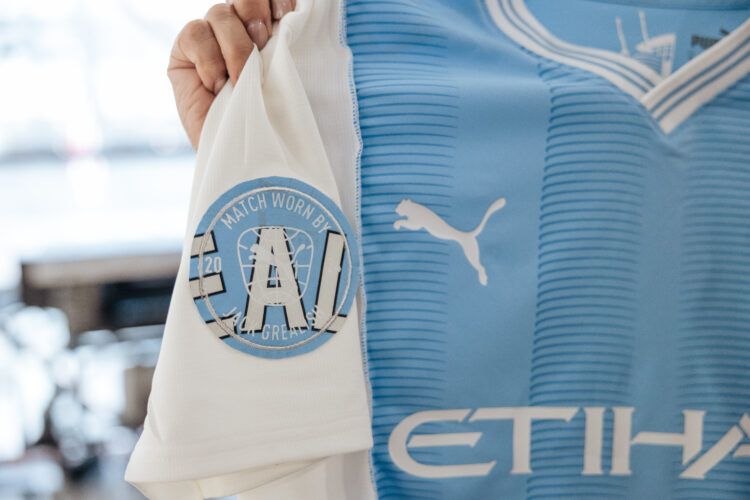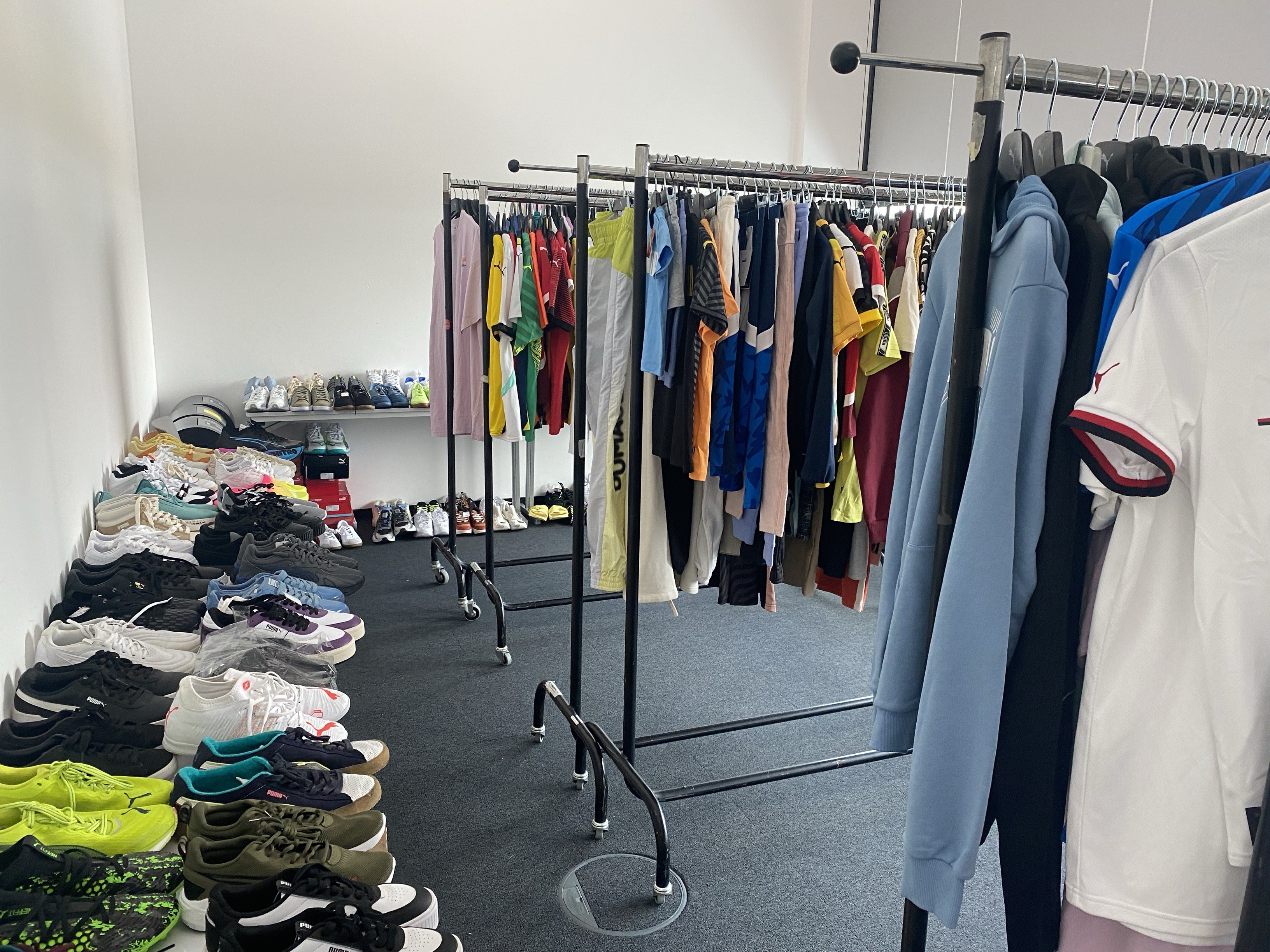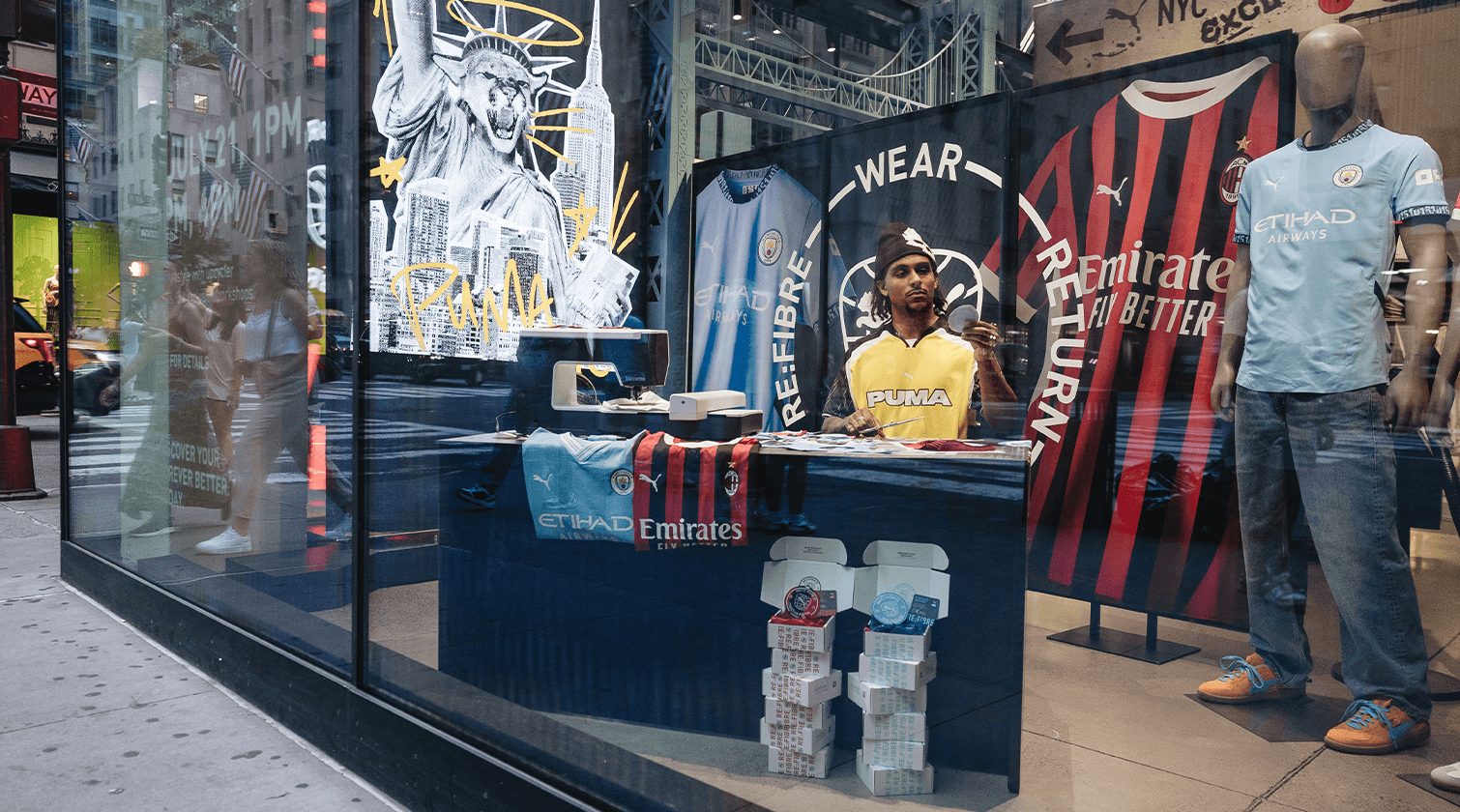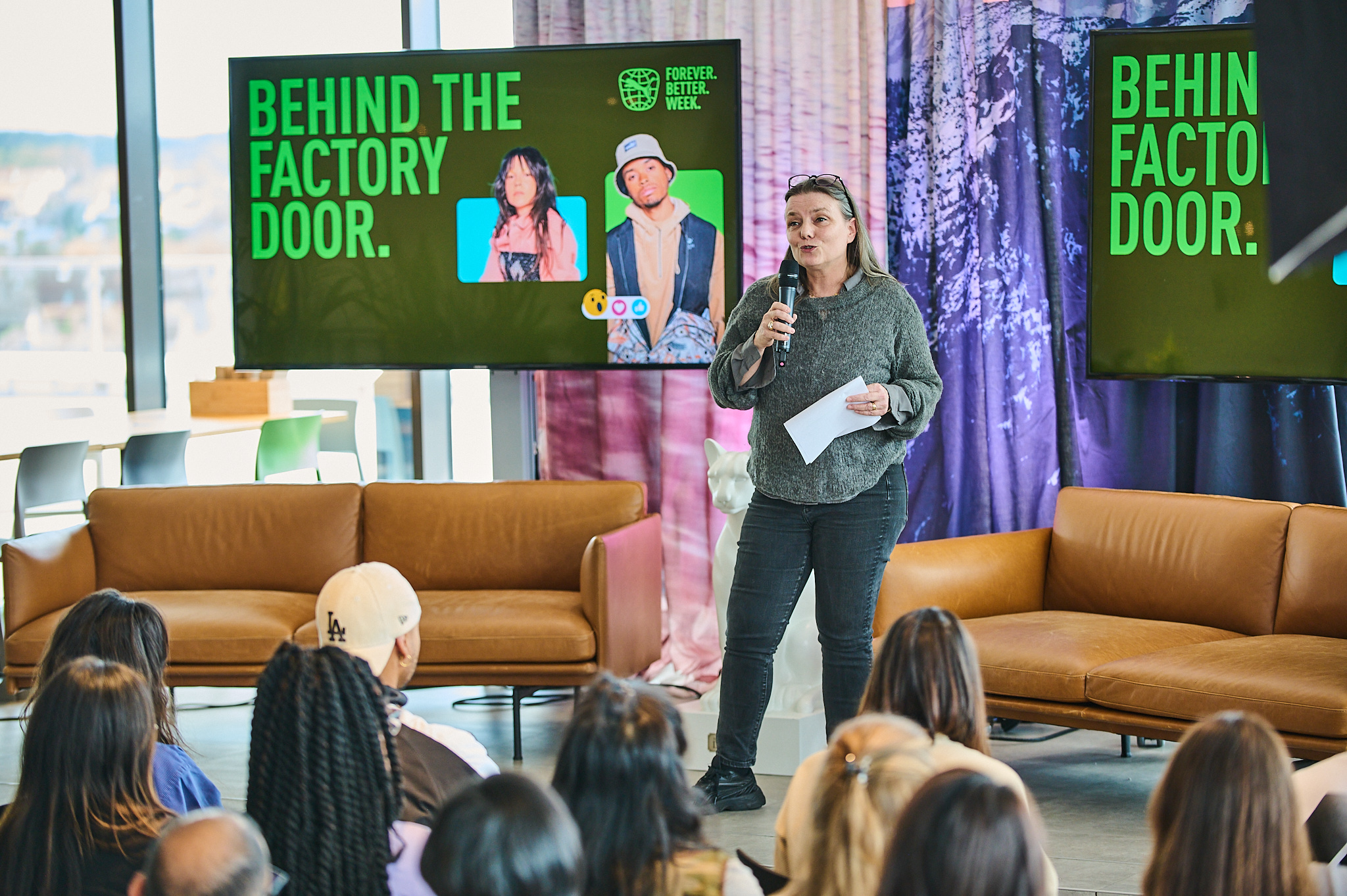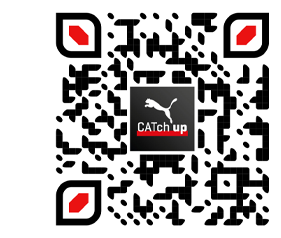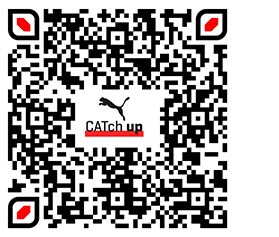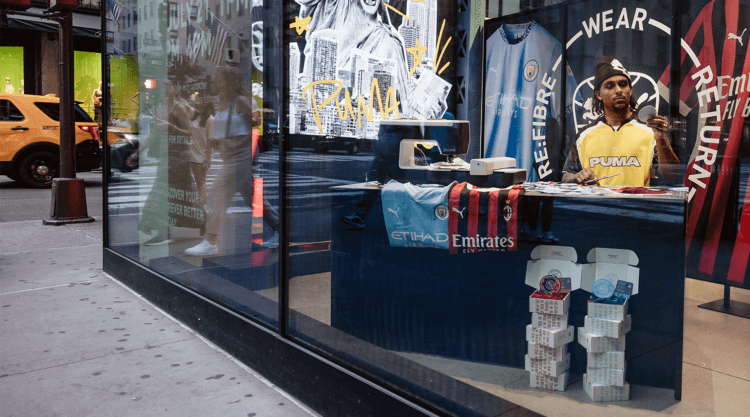
Andrew Burgess talks
circularity & upcycling
"I would love to see upcycled collections from unsold inventory, defective items, or products that got returned."
August 21, 2024"I would love to see upcycled collections from unsold inventory, defective items, or products that got returned."
August 21, 2024Together with our voice of a Re:Generation, Andrew Burgess, our RE:FIBRE program took over the PUMA Flagship Store in NYC, as we celebrated upscaling our textile-to-textile recycling program and for the first time producing millions of PUMA replica football jerseys with RE:FIBRE. Between his sewing stunt in the storefront window and teaching customers how to upcycle their old clothes, Andrew took the time to sit down and catch up with us! Read everything about his involvement in the NYC activation and his thoughts on how PUMA can improve its journey towards circularity below.
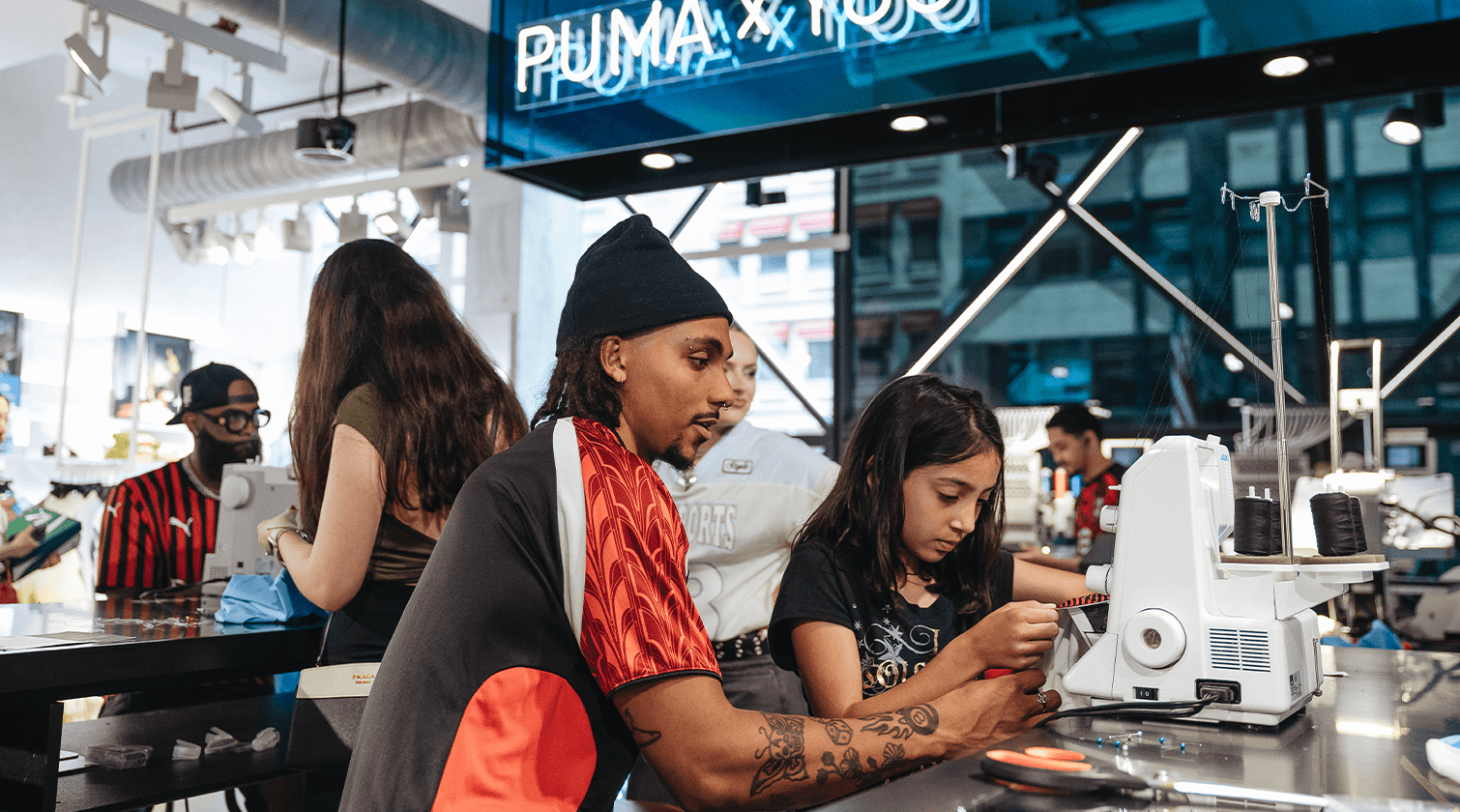
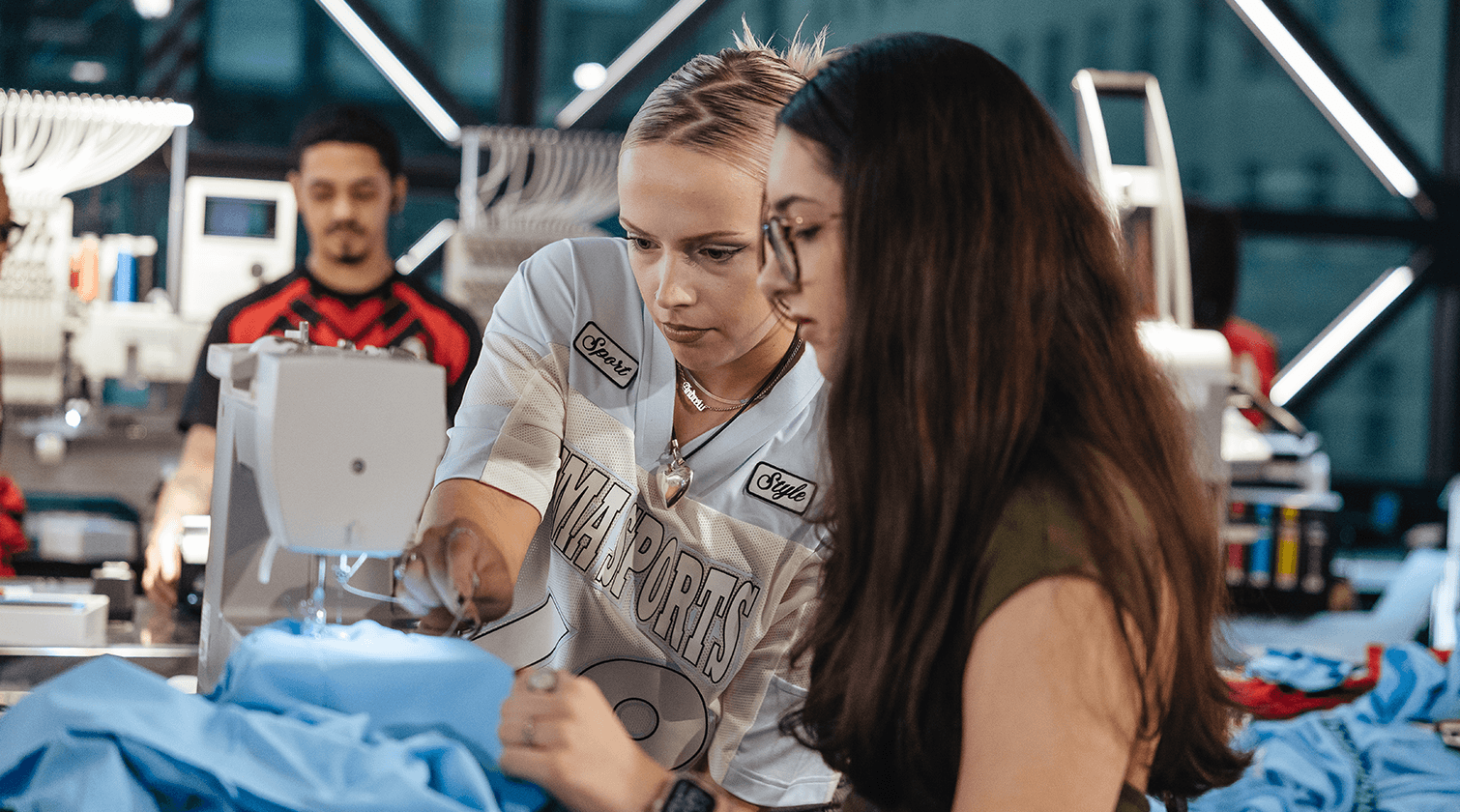
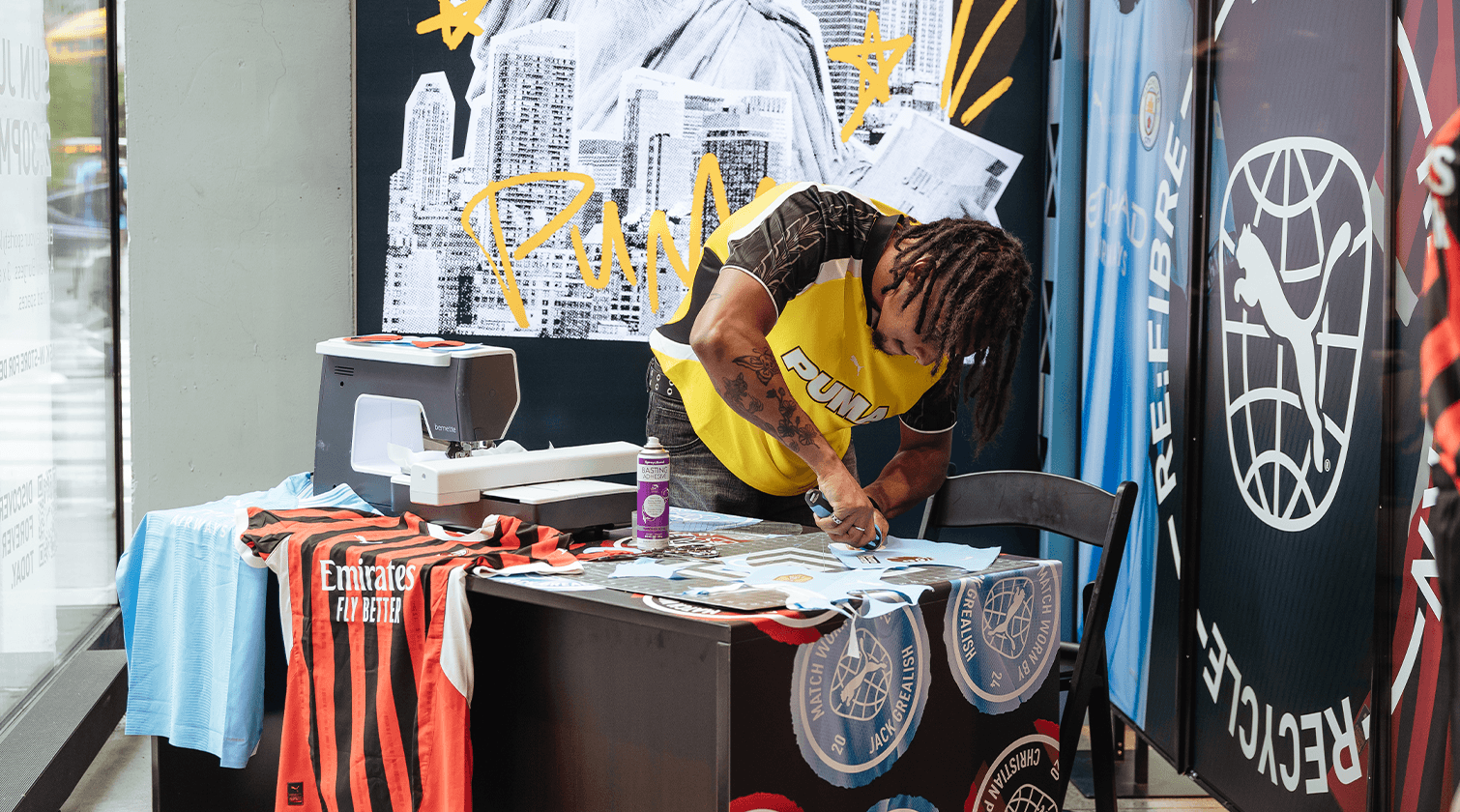
Circularity will be a key focus for PUMA going into the future. Your focus is upcycling, which is part of a circular approach to consumption. Can you explain what circularity means to you personally and how it aligns with your role as a Voice of a RE:GENERATION?
Andrew: Circular fashion has been a part of my life long before I even knew what upcycling was. I’ve been thrifting since I was 14 years old, and 99% of my closet is thrifted, or clothes I have made from second-hand materials. To me, circularity is about embracing the value of second-hand items. Every piece I thrift has a story and I’ve embedded that into my brands DNA, our slogan being “where the past meets the future.” I feel as a Voice of a RE:GENERATION, part of my role is to spread that message and show people the value of taking something old and turning it into something new.
Andrew, you were part of our NYC activation and crafted 100 limited edition badges made from match worn jerseys for the event. What do the badges represent for you?
Andrew: The idea and the materials I had to work with evolved over the few months we worked on this project and I’m very happy with the result. To me, the badges are a symbol of innovation, blending the world of sports and sustainable fashion to celebrate PUMA’s RE:FIBRE milestone.
You hosted 3 upcycling workshops at the store. What do you hope participants take away from these sessions? And what is your favorite memory of this event?
Andrew: Since my partnership with PUMA began, it’s been a goal of mine to host an upcycling workshop. I got the chance to do so at Forever Better week in Herzo, and now at the flagship store in NYC. The main thing I hope people took away is that it’s really not that hard to customize your own clothing. I had people who claimed they weren’t creative and had never done anything like this go outside of my instructions and create something unique. I hope that they continue to tap into that creativity in other facets of their lives.
My favorite memory was finally getting to my hotel after traveling for 18 hours during the Crowdstrike outage. On a serious note, seeing everyone look so accomplished after completing the workshop was really fulfilling.
View this post on Instagram
Going into the future, how do you see the topic of circularity evolving for fashion brands, and what role will community involvement play in its growth?
Andrew: As brands continue to push the envelope and create viable circular business models, I think more and more will follow suit. I believe it’s still a relatively niche component of business models for a lot of fashion brands but will continue to evolve into a core component.
You have been a Voice of a RE:GENERATION for over a year now, how has your journey with PUMA influenced your personal and professional approach to sustainability?
Andrew: I’ve always had a solid and pretty basic personal approach to sustainability. Recycling, reusable water bottles, reducing energy consumption, things like that. But working alongside PUMA has opened my eyes to all the moving parts that go into corporate sustainability. I’m at a point where I would love to scale my brand up from just making one-of-one pieces to producing limited runs of certain items. Now of course I’m at a microscopic level as compared to PUMA but I have more of an understanding of what to look for when searching for factory partners.
From your POV, what could PUMA do better to become more circular?
Andrew: I would love to see an expansion in their upcycling and reuse efforts. Upcycled collections from unsold inventory, defective items, or products that got returned. It would also be interesting to see PUMA offer a repair service to extend the life of their products.
Since collaborating with PUMA, how has your follower base evolved? Have you noticed any changes in their engagement or perception?
Andrew: It’s hard to measure, but I always receive good feedback on my social posts and that’s very encouraging for me.
Thank you, Andrew, for taking the time!
Through innovative projects and a shared vision for a circular future, we are moving toward a more circular business model.
Because there is only one FOREVER. Let’s make it BETTER.
